Desert Defender Graduates First Joint Service Course
The Warfighter Word, September 2017
By Debbie Aragon, AFIMSC Public Affairs

FORT BLISS, Texas — Working side-byside, Sailors and Airmen built critical skill sets during the first joint-service security course at the Desert Defender Ground Combat Readiness Training Center recently.
Although Sailors have attended two Desert Defender classes in the past, this was the first time Air Force and Navy students completed the same course together, according to Lt. Col. Bernard Sprute, Center commander.
Desert Defender, the Air Force’s largest security forces readiness training center, focuses on fundamental base defense training prior to a deployment. The standard security operations curriculum experienced by the joint students focused on topics like improvised explosive device detection, mounted and dismounted patrols, counter insurgency operations, culture awareness, entry control point operations, vehicle roll-over response, as well as combat lifesaving skills.
Desert Defender provides “a great, fundamental baseline prior to deploying, regardless of where you’re going to deploy. Whether it be a gulf state, Afghanistan, Iraq or anywhere in Africa,” the commander said.
Bringing U.S. military services together in a front-lines joint training environment is “huge,” Sprute added. The training offers a consistent baseline, “not just for our Air Force security forces Defenders but for those Navy security forces going down range to the very same countries (Airmen) go to and provide the same sort of base defense and ECP operations we do.” One of the Navy students in the joint course was Petty Officer 2nd Class Christopher Norberto, a master-at-arms, or military policeman, assigned to Naval Air Station Whidbey Island, Washington.
“Training with the Air Force allows us to learn tactics, techniques and a skill set that we wouldn’t have access to in our branch of service,” said Norberto. “It also leads to an exchange of techniques and ideas that can be built upon each other and allows us to have a deeper understanding and appreciation for our brothers and sisters in uniform.”
In addition to the joint environment, Desert Defender provides a safe environment for students to learn what can inherently be dangerous skills while in a safe, controlled environment. Mistakes made during training are quickly corrected by cadre members who are always nearby.
“Making mistakes in training allows for us to identify and correct them before they can potentially lead to catastrophic incidents downrange. The importance of having a safe and controlled environment to practice these skills and make the mistakes beforehand can be measured by the lives it can save in the future,” Norberto said. In addition to the standard security operations course, the Center offers a wide variety of training on more than 1.1 million acres at Fort Bliss.
“Whether you’re talking about a base defense operations course … mounted or dismounted operations, we have convoy live-fire ranges here, we have real full distance firing ranges. We have restricted airspace that we can fly the RQ-11B Raven in … it’s a great place for Defenders to come through and receive realistic training … as realistic as we can make it,” Sprute said.
The RQ-11B Raven is a small, unmanned aircraft system that provides security forces with real-time, direct intelligence, surveillance and reconnaissance, and target information.
“(Fort Bliss) offers a very, very realistic and rigorous training environment whether you’re talking about the elevation, the mountains, the heat, the critters … you name it, very realistic training environment to what you’re going to see downrange,” the commander said.
Desert Defender is part of AFIMSC’s Air Force Security Forces Center, headquartered at Joint Base San Antonio-Lackland, Texas.

United Way launches Mission United Military and Veteran Recognition Program
SAN ANTONIO, TEXAS (September 25, 2017) – The Mission United Military and Veteran Recognition Program, part of United Way of San Antonio and Bexar County’s military information and referral program, is kicking off today to help military, veterans and their families identify under-recognized services and discounts available to veterans and military members.
Helping military members navigate the robust, but often complex, community support programs for the military, Mission United’s new recognition initiative links military members, past and present, with support programs while also recognizing military-friendly agencies, stores, businesses and companies that acknowledge those who serve.
As part of the recognition program’s launch, Mission United is contacting 607 stores and 135 agencies offering either a military/veteran discount or military/veteran-specific program.
Participating local partners offering military services and discounts can be easily identified by a Mission United window decal displayed on the front door. Active duty, reservists, National Guard, veterans and their families will know that their service is appreciated and recognized by the facility displaying the Mission United logo.
“United Way became a MISSION UNITED partner because we saw a population in Military City USA that has a very specific set of challenges and needs,” said Andrew Sasseville, Senior Vice President of Community Services and Accountability for United Way and a retired Air Force officer. “Military members and veterans have been trained not to ask for help, so when they do, the situation is many times close to critical. MISSION UNITED makes the calls to address the need before the avalanche of other problems start.”
“Despite the amazing generosity of this great city, the true challenge is meeting the many requests for help with basic needs; whether it’s rent or utility assistance, or food, there is never enough,” said Sasseville. “By helping military and veterans save a few dollars, while at the same time giving those stores and agencies that go above and beyond to help military and veterans get the recognition they deserve, it is a win/win for all,” he added.
Utilizing social media, monthly newsletters, outreach events, relationships with the military instillations, and other partners, Mission United will bring attention to the agencies/stores/companies that “give that little bit extra” to military and veteran customers and clients. Mission United will also publish a booklet listing those agencies/stores/companies participating in the recognition program.
“It’s a pleasure to be part of the MISSION UNITED family,” said Travis Pearson, CEO of Family Endeavors. We are proud to display the logo on our facility so that veterans and military families know we are here to serve them.”
Mission United is staffed by three veterans, referred to as Military Navigators, who assist fellow veteran and military families in navigating the maze of health and human service programs available in the San Antonio area.
Established in 2015, Mission United handled over 10,000 calls in 2016 from active duty service members, reservists, veterans and their families. In addition, to help address the needs of vulnerable military families with children, United Way of San Antonio and Bexar County was awarded a five-year Texas Department of Family and Protective Services Prevention and Early Intervention Division. The Military Families and Veterans Prevention Program (MFVPP) grant provides a more complete offering of wrap-around support services. With over 100 families served in the first five months, the MFVPP grant is providing much needed support to our military and veteran community.
Military members call 2-1-1, a 24/7/365 confidential phone service dedicated to connecting people with community, health, and disaster services. Callers talk to a highly-trained call specialist who can navigate the complex system and connect callers to the best military or veteran resources, discounts, and benefit information, such as behavioral health, education and employment, and financial assistance.
For more information, please email Mission United at This email address is being protected from spambots. You need JavaScript enabled to view it. or visit www.unitedwaysatx.org/mission-united.
Air Force’s Surprise JLTV Buy in FY18 Could Be Start of Larger Procurement Effort
By: Valerie Insinna, Defense News, 4 August 2017
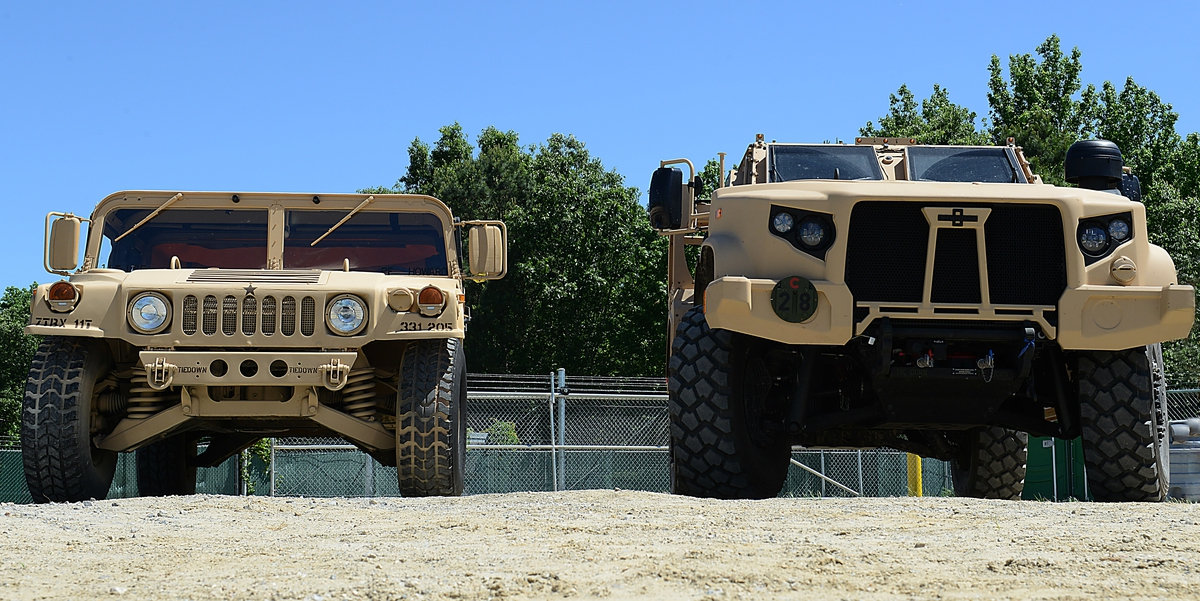
A Humvee, left, and a Joint Light Tactical Vehicle stand on display for size comparison at Joint Base Langley-Eustis, Va., on May 2, 2017. Senior leaders from U.S. Army Training and Doctrine Command test drove the vehicle through one of Fort Eustis’ training areas to experience the new suspension and overall feel of the vehicle. (Staff Sgt. Teresa J. Cleveland/U.S. Air Force)
Service wants to replace 3,270-vehicle Humvee inventory
WASHINGTON — The U.S. Air Force has quietly inserted itself into the Joint Light Tactical Vehicle program with a request of 140 units in fiscal 2018, but the service is poised to buy hundreds — and perhaps even thousands — more vehicles if it can find the funding in future years.
Although budget documents show no further procurement planned for FY19 through FY22, the Air Force does not intend to see its JLTV acquisition end in FY18. The service wants to replace its entire 3,270-unit Humvee inventory, although the details are fuzzy on how much of the fleet can be recapitalized and when, Air Force spokeswoman Laura McAndrews wrote in response to emailed questions from Defense News.
“We would like to eventually phase out the entire High Mobility Multi-Wheeled Vehicles fleet with the newer vehicles,” she said, using an alternative name for the Humvee. “We are still formalizing our fleet management strategy of when we will acquire all of our hoped-for new vehicles and to what units they will go and in what order.”
The JLTV program was spearheaded by the Army and Marine Corps, which plan to buy a whopping 49,099 and 5,500 vehicles, respectively. The selection of Oshkosh as the JLTV manufacturer in 2015 was made with much fanfare, as the contract is the services’ largest vehicle program in decades.
In contrast, the Air Force’s decision to enter the program played out almost entirely behind the scenes. This January, Defense News broke the story that service officials were interested in purchasing the JLTV for security personnel that defend its missile launch facilities — although McAndrews stated that the service began looking for alternatives to replace the Humvee in 2012.
Air Force representatives had even traveled to Marine Corps Base Quantico last December for demonstrations and briefings before posting a request for information on tactical vehicles later that month.
“We ascertained the JLTV was the best fit for us because we rely on the expertise of the Army and Marines when it comes to acquiring tactical vehicles,” McAndrews explained, adding that the service did not conduct any independent testing.
The Air Force then requested $52.5 million in FY18 to procure 140 JLTVs. Of that sum, it plans to buy 46 utility variants (a two-seat version with a wide bed like a pickup truck); 48 general-purpose variants, which are the standard four-seat version; and 46 heavy-gun carrier variants, which have space for a gunner.
Those vehicles will be operated by Air Force security forces, explosive ordnance disposal teams, pararescue and personnel recovery units, tactical air control party teams, and special tactics forces, McAndrews stated.
The Air Force plans to begin fielding the JLTV in FY19, when full-rate production begins. Oshkosh spokeswoman Alexandra Hittle told Defense News that the company has the capability to meet the Air Force’s emerging demand, as well as that of the Army and Marine Corps.
“Additional buys will not affect USMC and Army deliveries,” she said. “Oshkosh stands ready to produce JLTVs for all services to ensure all of our troops receive the next-generation equipment they need to successfully complete their missions.”
Although the Air Force operates fewer Humvees than the Army and Marine Corps, its vehicles are experiencing similar problems in terms of performance and maintainability. The average age of the fleet is 10 years old, and users have commented on the Humvee’s lack of power and agility as more and more armor has been loaded onto the vehicles, McAndrews explained.
A few specific maintenance problems have also cropped up, particularly with vehicles operated in the hot temperatures of the Middle East.
“The biggest challenge with the HMMWV fleet is the injector pumps for vehicles in the Central Command area of responsibility, which require more frequent replacement due to the environment and operating them in high temperatures for long periods of time,” McAndrews stated. “A secondary issue is the braking system for up-armored vehicles. The added weight from the up-armor puts added strain on the brake pad, again necessitating more frequent maintenance.”
Researcher, Defenders Bring New Counter-UAS Program to BAF
By Staff Sgt. Benjamin Gonsier, 455th Air Expeditionary Wing Public Affairs / Published July 14, 2017

Defenders from the 455th Expeditionary Security Forces Squadron and a researcher from the Air Force Research Lab teamed up to bring a new program to Bagram Airfield. To counter the challenges that unmanned aircraft systems pose on the battlefield, the team is training to pilot and use the drones, so enemy tactics can be replicated and used to train coalition forces on how to react to them. (U.S. Air Force photo by Staff Sgt. Benjamin Gonsier)
BAGRAM AIRFIELD, Afghanistan -- As the use of unmanned aircraft systems rises across the world, researchers from around the Department of Defense are testing new ways to counter the new threats they could present.
The 455th Expeditionary Security Forces Squadron teamed up with a researcher from the Air Force Research Lab to teach Airmen how to pilot drones and use them to train coalition forces on how to react to them on the battlefield.
“This is a brand new program for the wing, where we are able to test our counter-UAS systems coming into BAF, in addition to running base-wide exercises,” said 1st. Lieutenant Ryan Wilkerson, a researcher attached to the 455th ESFS.
Wilkerson, who is not a defender by trade, is deployed out of the AFRL, Rome Research Site, New York, and came to the best place to test the program--Bagram--where the challenge is present in real-world scenarios.
A few defenders assisted Wilkerson, serving as drone pilots and using their own down-time to practice piloting and learn tactics the enemy may use.
“It’s exciting to be able to pilot these aircraft for a program no one has ever been a part of before,” said Senior Airman Christopher Gallman, 455th ESFS joint defense operations center. “I can’t wait to see where it is going and to be able to help out the total-force.”
The “pilots” wear aviator sunglasses and have an aura of swagger around them, as they take great pride in being at the forefront of tactical development.
“It’s fun and enjoyable to do, and knowing how beneficial it is to not only the base, but all of the force, makes it worth doing,” Gallman said.
Training never ends, and while service members train to deploy, training still continues while deployed.
“This allows us to be better prepared,” Wilkerson said. “The best way to train is to actually put something in the air and see how people react. We train how we fight, so this is the most efficient way to counter this growing concern amongst coalition partners.”
Tactics used by the enemy are constantly evolving, which is why Airmen are constantly adapting to face news threats head-on, ready to engage anything that comes their way.
The DoD Warrior Games, Chicago, IL, 30 June – 8 July 2017
From DoD Warrior Games web site http://www.dodwarriorgames.com/
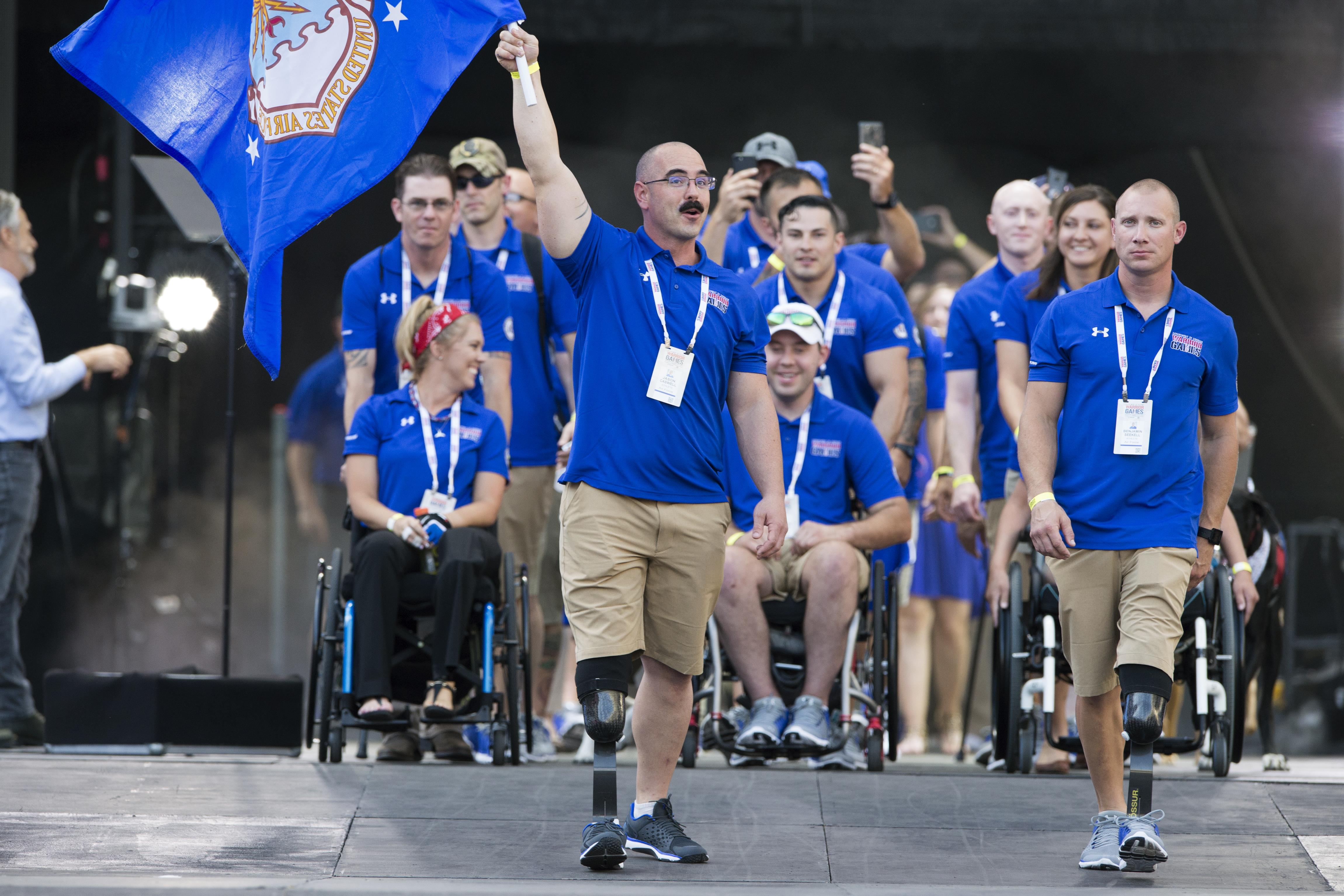
The 2017 Department of Defense (DoD) Warrior Games will be held June 30 – July 8 in Chicago, Ill. Approximately 265 wounded, ill and injured service members and veterans representing teams from the Army, Marine Corps, Navy, Air Force, Coast Guard and U.S. Special Operations Command (SOCOM), as well as the United Kingdom Armed Forces and the Australian Defence Force will participate in the competition.
The Warrior Games exist to provide an opportunity for athletes to grow physically, mentally and spiritually from the sportsmanship and camaraderie gained by representing their respective service teams in a friendly and spirited competition. It is an opportunity for athletes to showcase their enduring warrior spirit in the presence of their families and a grateful nation.
Teams include active-duty service members and veterans with upper-body, lower-body, and spinal cord injuries; traumatic brain injuries; visual impairment; serious illnesses; and post-traumatic stress. They will go head-to-head in archery, cycling, sitting volleyball, shooting, swimming, wheelchair basketball, track and field, engaging in friendly competition and experiencing the healing power of sports.
2017 marks the first year the Warrior Games will be held entirely outside a military installation or a U.S. Olympic Committee facility. Bringing the Warrior Games to Chicago increases public exposure of the event and provides new opportunities to showcase the strength, resilience, and dedication of the participants. With downtown Chicago as the backdrop, the 2017 Games promise to be memorable for the wounded warrior athletes, enjoyable for their caregivers and family members, and inspirational and educational for spectators and other supporters.
The Warrior Games were established in 2010 as a way to enhance the recovery and rehabilitation of wounded warriors and to expose them to adaptive sports. Sponsored by the U.S. Olympic Committee in Colorado Springs, Colo., the inaugural Warrior Games hosted approximately 200 wounded, ill and injured service members. During the following years, the Warrior Games expanded in size and scope.
Defenders on the USAF Team:
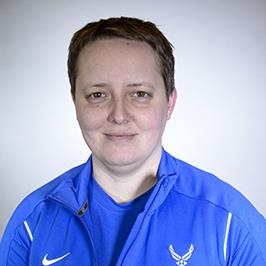
Jamie Biviano, Veteran/Senior Airman
MOS: Security Forces
Hometown: East Syracuse, NY
Events: Archery, Cycling, Field, Shooting, Swimming, Track
“Don’t think that this is the end. We tend to get comfortable in the roles that we made for ourselves, without thinking of the what ifs. None of what we are going through right now was ever planned, but that doesn’t mean we can’t thrive with the cards that were dealt.”

Matt Cable, Staff Sergeant
MOS: Security Forces
Hometown: Great Falls, MT
Events: Field, Track
“Seeing individuals who go through tragic events and find the strength to keep fighting and pushing through each and every day is what keeps me pushing and fighting each day.”
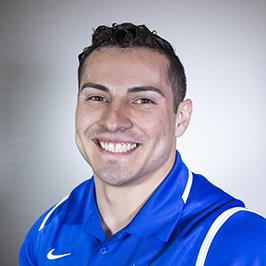
Vincent Cavazos, Staff Sergeant
MOS: Security Forces
Hometown: Fresno, CA
Events: Archery, Field, Swimming, Track
“Know that even though it may seem like no one understands you or what you are going through there are people in the program that can help you find whatever it is to help bring you happiness and peace in your heart again.”
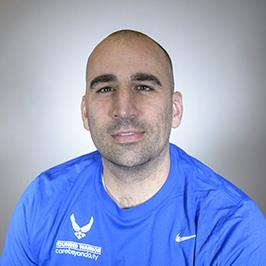
Michael Christiansen, Technical Sergeant
MOS: Security Forces
Hometown: Layton, UT
Events: Archery, Shooting
“Only you hold yourself back. Find your own motivation/what drives you and press the gas pedal. When it gets tough and it hurts and you want to quit, give it 10% more.”
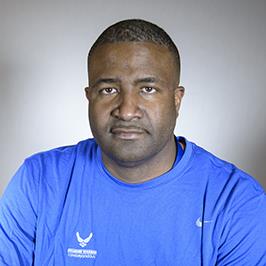
Larry O’Neil, Jr., Technical Sergeant
MOS: Security Forces
Hometown: Miami, FL
Events: Field, Sitting Volleyball
"One small crack does not mean that you are broken, it means that you were put to the test and you didn't fall apart."

Benjamin G. Seekell, Technical Sergeant
MOS: Security Forces
Hometown: Charlestown, RI
Events: Cycling, Field, Track, Wheelchair Basketball
“There are two choices for those who face adversity: Be defined by your adversity, or be defined by how you overcome it.”

Brian Williams, Master Sergeant
MOS: Security Forces
Hometown: Sierra Vista, AZ
Events: Cycling, Sitting Volleyball, Wheelchair Basketball
“Remember where you come from, when you have the opportunity to help and mentor do it. As soon as you feel as though you are too good to do those things, you have forgotten, and might be in the wrong venue; don’t forget.”

Terrance Williams, Technical Sergeant
MOS: Security Forces Defender
Hometown: Kankakee, IL
Events: Sitting Volleyball, Track, Wheelchair Basketball
“Try everything, don't quite. You might find that the sports you thought you could no longer do are there for you and only need you to adapt a little bit.”
Page 32 of 50


